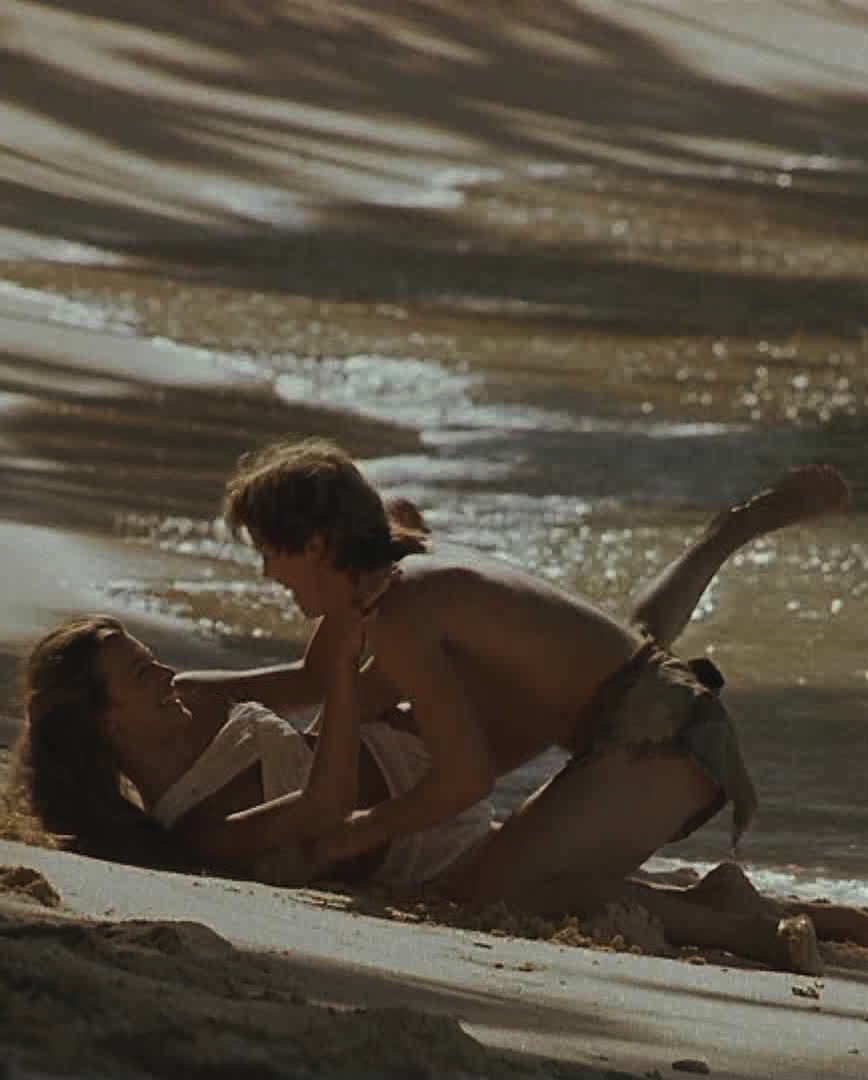Friday, August 2, 1991.
RETURN TO THE BLUE LAGOON. Written by Leslie Stevens. Based on the novel The Garden of God, by Henry De Vere Stacpoole. Music by Basil Poledouris. Produced and directed by William A. Graham. Running time: 98 minutes. Mature with the B.C. Classifier's warning: occasional violence and nudity.
I SUPPOSE IT WAS inevitable.
Last year [1990], the movie moguls offered adolescent audiences a remake of Lord of the Flies. Based on William Golding's "moral fable," it told the story of castaway schoolboys who revert to savagery on a desert island.
Now, in the interests of moral balance, we must Return to the Blue Lagoon.
The third screen adaptation of Henry De Vere Stacpoole's 1908 novel The Garden of God, director William Graham's film celebrates noble primitivism and "natural love."
Taken at face value, his postcard-pretty feature is an Edenic affirmation of romance and monogamous marriage. Here, the prevailing philosophy appears to be a moony-eyed "live slow, die young."
Graham's version opens with a small boat adrift in the "South Pacific Ocean." It is 1897, 15 years since castaway children Emmeline and Richard (Brooke Shields and Christopher Atkins in Randal Kleiser's 1980 feature The Blue Lagoon) were shipwrecked.
When their drifting boat crosses the path of the schooner La Violante, the diapered teens are already dead. Rescued, though, is their son (Jackson Barton), a toddler who is delivered into the care of Sarah Hargrave (Lisa Pelikan), a widowed missionary returning to San Francisco from Tahiti with her infant daughter Lilli (Emma James).
With hardly a pause for breath, screenwriter Leslie Stevens contrives a new disaster, and little Richard is returned to the island of his birth, this time in the company of stepmom Sarah and his new kid stepsister.
The good news is that there is a fully-furnished beach house from the previous movie waiting for them. The bad news is that the place is still uncharted and well off any known shipping lanes
The indefatigable Mrs. Hargrave lasts about seven years, just long enough to instil a few survival skills and proper Victorian values into the energetic pre-teens (eight-year-old Courtney Phillips and Garette Patrick Ratliff, 10). She even writes a burial service for them to recite over her hillside grave.
And now it is six years later. No longer little, Lilli (15-year-old Milla Jovovich) needs someone to talk to. "Mother," she prays. "I don't know what to do. He's changed. I've changed. I'm confused."
So is Richard (Brian Krause).
Aside from Lilli's mom, he's never really seen another woman. Sure, he feels stirrings, but without any basis for comparison, he doesn't even know that his island companion is drop-dead gorgeous.
At this point, filmgoers can stop taking Return to the Blue Lagoon at face value.
Richard, who has seen Lilli's next-to-naked body every day for at least 13 years, suddenly starts acting like a suburban nerd smitten with a cheerleader.
At this point, director Graham's drama starts looking a lot like a softcore peep show for recent victims of puberty blues. Their "natural love" plays like standard, sappy, adolescent infatuation in a context that "justifies" a bit of teenaged female toplessness.
The National Geographic-style nudity aside, his film really is kid's stuff. This Return to the Blue Lagoon is a generally wholesome, mostly silly fantasy for the Home Alone generation.
The above is a restored version of a Province review by Michael Walsh originally published in 1991. For additional information on this archived material, please visit my FAQ.
Afterword: Return to the Blue Lagoon was among the dozen theatrical features credited to veteran television director William Graham. Another was 1982's Harry Tracy, Desperado, a Bruce Dern western shot on location in Barkerville and Victoria, B.C. Milla Jovovich's Canadian connection is, of course, the Resident Evil franchise. Although the producers have shot scenes in Germany, Mexico, Japan and Russia, Toronto (as Racoon City) has been home base for four of the five films to date.
